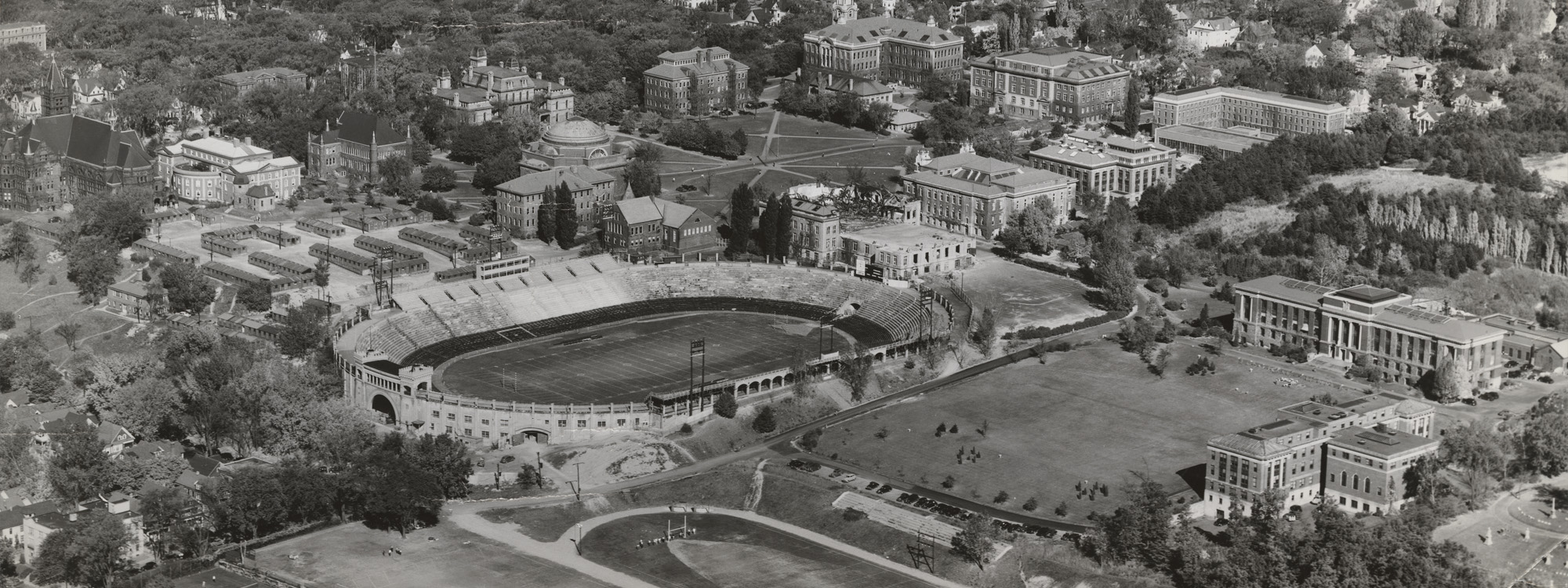Introduction
Few universities in the country were more closely identified with the GI Bill than Syracuse University. Announcing a “uniform admissions program,” Chancellor William Tolley promised servicemen and women that there would be places waiting for them at the University when they returned after the war. Later in life, he remembered, “I realized that if a veteran didn’t go to college as soon as he came back, he’d never have another chance. It was now or never. Now was not the time to shut the doors. Our doors opened wide in 1946.”
Opening those doors brought irrevocable change to Syracuse University. Veterans began enrolling in significant numbers immediately after the war. Although still a small university by national standards, Syracuse ranked first in New York State and 17th in the country in veteran enrollment. The resulting “GI Bulge” called for more housing and classrooms. Temporary buildings sprang up all around campus and surrounding areas. New academic programs were developed and social rules were changed. Veterans altered the landscape of campus by their sheer numbers, but they also changed the nature of student life and even challenged the University’s traditions.
Syracuse University was both tested and transformed by the GI Bill. The years 1945 to 1950 were not easy for anyone – not for the veterans, who were eager to make up for lost time, and not for the University, which faced challenges beyond anything in its history. But Syracuse took on those challenges with what came to be known as its “Can Do Spirit,” which prevailed among faculty, staff, and students alike. That spirit of innovation, commitment, and caring — born during these years — shaped a new Syracuse University and set its course to the future.
Please note: This exhibition contains image and text-based archival documents. Please contact the Libraries’ Accessibility Specialist if you require assistance accessing this content.
About the Curator
Meg Mason is University Archivist in the Special Collections Research Center at the Syracuse University Libraries.
Header image:
Detail from aerial photograph of Syracuse University’s main campus, between 1947 and 1949. Syracuse University Photograph Collection, University Archives. Photograph by Robinson Aerial Surveys, Inc.

